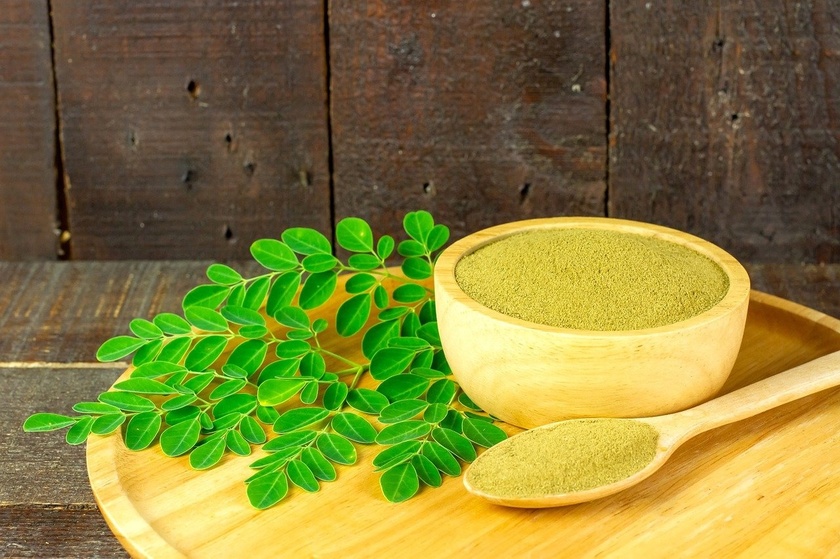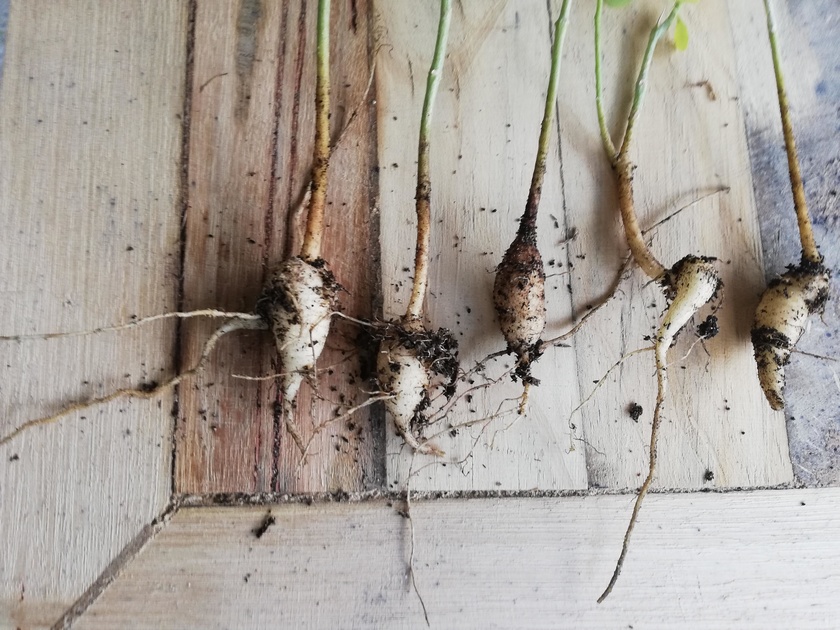This superfood is a gift from God, and is used to stem malnutrition in communities around the world.
It's a big job, and we're going to need stacks of input, advice and help from our community.
This is a chance to get involved and make a difference.
When we prayed on this, God said "Feed them." I don't know who 'them' is yet, but this will be shown in time.
Let's make some Moringa.
First, you need a quarter teaspoon of Moringa (Powder).
Then add as much honey as you wish, or any sweetener. If you're not using sweetener then you can always use water.
Then stir, and keep stirring until it makes a paste. This is very important, otherwise it just doesn't mix well together with the water.
Once your Moringa starts looking like this, you're good and ready to go ahead to the next step.
Slowly add a little water to start off with. Mix that in to make sure the paste is fully dissolved. Now go ahead and top up with the remaining water.
Add your milk of choice, in this case, Almond Milk.
And there you have it, a gorgeous cup of Moringa (Latte).
Enjoy.
Well, a quick update.
There's those little Moringas that have moved indoors, and they're looking pretty sad because they've just been transplanted. They're now up top here, under the lights in a controlled environment, pretty constant 21 degrees. I think they'll survive the winter pretty alright.
This one's already, I don't know if you can see that, got a little bit of a leaf popping out up top there. And those two were cuttings from the tops of these guys that the kids found and insisted in sticking in the ground, so we'll see if they grow, you never know but I'll look after them anyway.
But, yea, that's those five little tubers, so we wish them well.
Well, we've had our first few days of winter. It's starting to get a lot colder and the evenings are now into the single digits. Here's a little strawberry down here. Look how that guy's suffering.
And these little Moringas that we've got down by the side of the house are definitely suffering. Look at this little guy. You can see the yellow in the leaves, the way it's going. This one as well, there's a lot of yellow there at the bottom. You can't really see too well through there.
Yea and this little one is pretty much dead. It's just a stalk. I think I'll leave that one in the ground and just put a lot of, just pad it up around here, around the sides maybe with a bit of straw or something and we'll see how it goes, but yes, these guys are really suffering.
So I think I'm going to move them indoors. I'll quickly show you now what I've built, and that should work a lot better.
There we go. I've switched this on a couple of days ago. It's just three levels. Only the top level is on at the ...
I've been looking into this and we need worms, a big earthworm farm. Something capable of producing sufficient quantities of worm castings and worm tea.
I found one or two good Youtube videos before of people doing worms in bulk, but I need to actually search for them again and find them, and if anyone has any comments, any experience in worms, please share. I'm not talking about the little 5-gallon worm farms, but decent things at scale where we can have maybe a dozen beds, each 6"x12" or somewhere around there.
I don't know the sizes or anything, we've still got to figure this all out. We're probably looking at the scenario where we fill a shed or an undercover area, possibly do a big array of solar panels, and then use the solar panels as shading and put the worm farm beds under the panels.
Sometimes the days get really hot out here and if you're looking at around 43 degrees Celcius then I don't know if the worms will be able to survive that so we'll probably need some type of ...
I've been thinking about this and probably the best workflow for blog posts on our main website at HisMoringa.com is to actually run the primary as this Locals site and then just do an excerpt from the post as a blog post on the main site and then link the Locals post.
Like that everything remains focussed at Locals and we're able to actually focus the discussion in the Locals community, but still have the relevant content on the website.
I think that will probably work out the best going forward, and then obviously disable comments on the website and direct all comments back to the Locals community.
Let me know if there's any input or if anyone has any other ideas but that seems like the best way to go forward for me.
It's small but exciting.
The little saplings that I thought were doing nothing and were stunted by the heat this summer did stop growing under the ground. They're not dead. They didn't give up. Just look at those beautiful tubers.
That's why I have so much hope for Moringa as a transformative agent here. They're so good in so many ways, and it's almost impossible to kill these little wonders.
Imagine a forest of a few million Moringa trees spanning over what was once an arid desert.
I love these plants.
Our first trial batch of ODC3 seeds have cleared Mumbai sorting and are waiting to be loaded on an aircraft.
If you'd like to track them with us, here's the tracking number:
RM422066591IN
https://www.indiapost.gov.in/_layouts/15/dop.portal.tracking/trackconsignment.aspx
This is so exciting.
With the information going on at the moment about super-foods and how good they are for you it is only fair we truly look at what is Moringa. It is being thrown around lately for all its health benefits but lets dive a little deeper into this green wonder.
So Moringa Oleifera, or Moringa for short, has been known to be called the Tree of Life, Miracle Tree or the Drumstick Tree. All named for the properties it has. Native to India but can now be found in most parts of the world especially in your warmer regions.
What truly is Moringa, to give a short answer, it is a super-food like no other, filled with so many nutritional health benefits and almost all of the plant is edible. Leaving little wastage. The leaves are eaten raw, cooked or dried and powdered. The seed pods are cooked as a vegetable in curries and stews, and the seeds are dried and chewed raw. Dried seeds are pressed for their oil, which is used in everything from lubricating precision watch gears to cosmetics and cooking and ...















